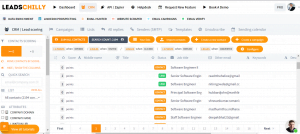The new year is here, and with it comes the promise of new opportunities—including in B2B marketing. Staying ahead of the curve in B2B data provision is essential to keeping your outreach relevant, targeted, and effective. The right data provider can make all the difference in your marketing campaigns, so it’s important to choose wisely…









